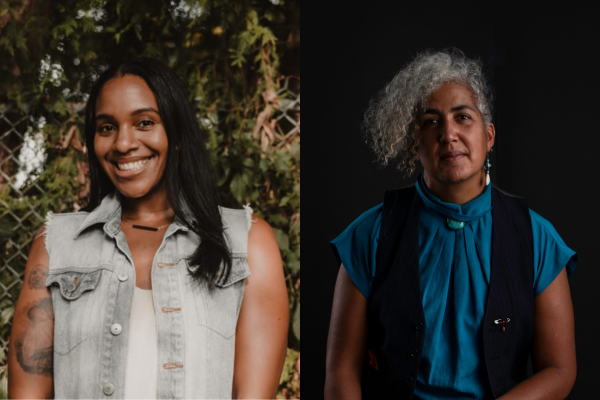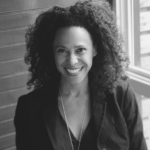BRN talk centres Black, Indigenous histories in the classroom


A recent talk hosted by the Black Research Network (BRN) invited participants to consider how institutions can better reflect the interconnected histories and pedagogies of Black and Indigenous peoples into teaching and research.
Held virtually on Sept. 30, the event featured recipients of the BRN’s Black Indigenous Waterways Fellowship: Jade Nixon, the initiative’s postdoctoral fellow, and New York and Tulsa-based artist kara lynch, the BRN’s artist-in-residence.
Launched in 2023, the initiative was created to support the development of academic frameworks that highlight connections between Black and Indigenous histories – often taught in isolation.
“In relation to student learning, centering Indigenous and Black pedagogies invites students to think about, or have, a deeper and fuller story of lands, waters and place,” said Nixon, now a New York University Provost’s Faculty Fellow.
“In terms of curriculum, when we are centering Black and Indigenous pedagogies, it emphasizes what is worthwhile to spend time learning about, with and from.”
Nixon and lynch contributed to the Winter 2024 course, “Black Indigenous Waterways,” taught by Beth Coleman, an associate professor at the Institute of Communication, Culture, Information and Technology (ICCIT) at the University of Toronto Mississauga, and the BRN’s inaugural director.
“Bringing students into an interdisciplinary methodology, where research and the studio are the ways to practice, pushes us in directions of decolonizing the pedagogy,” said lynch, associate professor emerita of video and critical studies at Hampshire College.
lynch, who is of African and Wampanoag ancestry, drew on her experience establishing interdisciplinary collaborations with researchers, artists and activists to visualize course material and make it accessible beyond the classroom.
“When we centre Black Indigenous voices, pedagogies and ways of knowing, you start to have multiple voices and perspectives resonating,” lynch said. “It pushes critical thinking because we’re looking at the gaps in the colonial archive and historical record.”
Learning in place and lineage
lynch noted an exercise that welcomed students to bring an object that connected them to a specific place, often home, to root their learning in relationships and lineage.
“That exercise allowed all of us to bring in the community that we come from and the idea of our ancestors guiding us,” lynch says.
Throughout the course, lynch engaged deeply with the text Black Shoals, which explores the significance of Black and Indigenous studies, the possibilities between the two fields and how they have historically been kept apart. Artists like Yatika and Anita Fields, as well as Suzanne Kite, were introduced as examples of how these themes show up in practice.
For Nixon, co-developing the course curriculum with Coleman and lynch was an opportunity to explore the “different starting points” of Black and Indigenous feminist scholarship led by various generations.
Nixon, formerly based at the University of Toronto’s Women and Gender Studies Institute, explores Black feminist relationships to land, memory and the Atlantic Ocean. She said co-developing the curriculum was an opportunity to explore how Black and Indigenous feminist thought values the importance of recognizing lived experience in the classroom.
“We come to university with knowledge and lived experience that must be brought into the curriculum,” Nixon said. “I’ve learned to think of ancestors and community-based communities as always shaping my research practice.”
Beyond the classroom
Both Nixon and lynch continue to explore themes of the fellowship in their respective works.
Nixon is currently leading a youth participatory action research project with Black and Indigenous girls in New York City. The project asks young participants to reflect on how they understand their relationships with urban waterways.
Meanwhile, lynch contributed to Radio Outlaw, a mobile radio station project. One episode featured immigrants from South America living in Queens, who shared how they make sense of their relationship with the land.
“It’s important to centre Black, Indigenous and feminist ways of knowing because they have room for difference,” lynch said. “In fact, they are about relationship building.”










